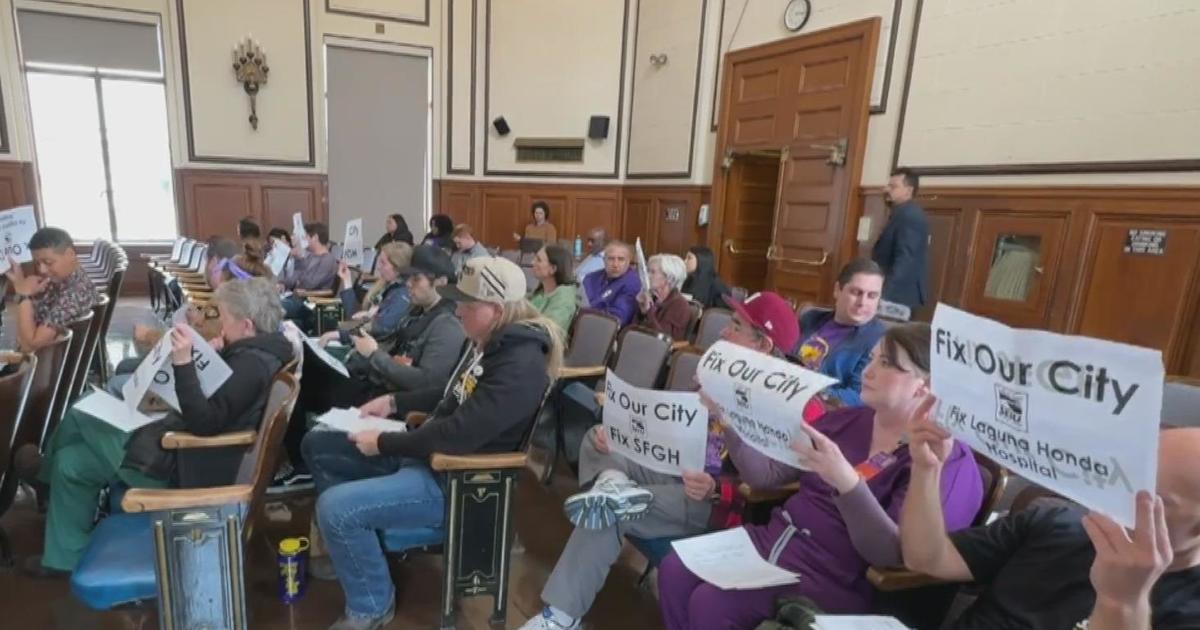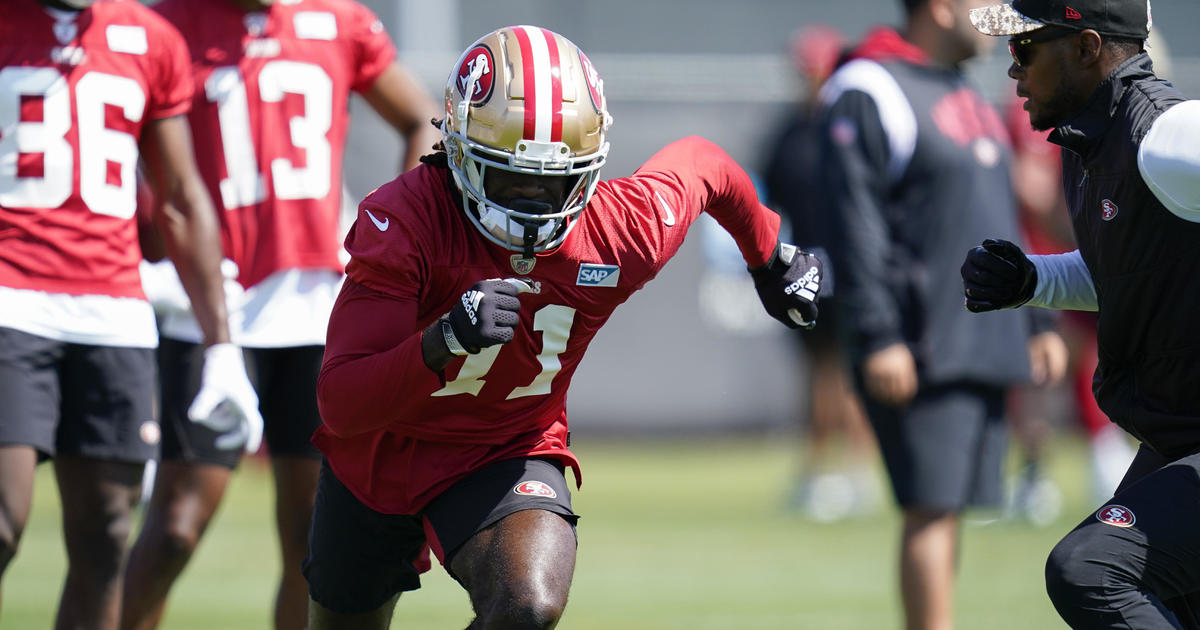Hunt Heats Up For San Francisco's Infamous 'Doodler' Serial Killer
SAN FRANCISCO (CBS SF/CNN) -- San Francisco police have a possible suspect in their cold case search for 'The 'Doodler' -- a serial killer who stalked San Francisco's gay community in the mid-1970s.
"We have a suspect in the assault that spawned the sketch," Inspector Dan Cunningham told CNN of a sketch of the killer released decades ago.
Police at the time were convinced that assailant was the Doodler, but Cunningham is now working to confirm the details.
"I'm still connecting the dots," he said. "I'm working to see if that assault is actually connected to the murders."
Police at the time were convinced that assailant was the Doodler, but Cunningham is now working to confirm the details.
"I'm still connecting the dots," he said. "I'm working to see if that assault is actually connected to the murders."
"The Doodler" is a young serial killer who stalked San Francisco's gay community in the mid-1970s. He would sketch strangers in bars, strike up conversations, leave with those strangers and then, police say, stab them to death. He became known as "The Doodler."
His last known victim died in the summer of 1975: The decomposing body was found near the 16th tee of a picturesque golf course that borders the Pacific Ocean. The victim's pants were unzipped. His face was eaten by maggots.
Police released a sketch of a suspect a few months later. They repeatedly questioned one man. But the Doodler was never caught. Now, more than 40 years later, the San Francisco Police Department says it has a suspect.
Three men were assaulted but somehow managed to escape the Doodler's clutches, the lead inspector on the case at the time told reporters: a well-known entertainer, a European diplomat, and a third man who left the city and didn't respond to police calls. They gave police descriptions of the Doodler.
And Cunningham is now looking for the diplomat.
"I'm waiting to determine if this person is still alive," he says.
In the 1970s, detectives said 'The Doodler' might have butchered as many as 14 people.
"I'm looking at five murders," says Cunningham, who recently took charge of the department's cold case unit. "But I'd be a fool to say he didn't do more."
A police artist has updated the sketch: aging the Doodler, drawing him as he might look now. The updated sketch will be released, says Cunningham, "once I've got all my ducks in a row." If he's still alive, the Doodler will be in his early 60s.
Cunningham will also work with the SFPD crime lab, hoping modern forensic technology might manage to extract a usable DNA sample from evidence gathered at two Doodler crime scenes 43 years ago.
"We made a lot of effort to collect a lot of blood samples at that time," says Inspector Kenneth Moses, who worked at the lab in the 1970s. "If there's no moisture, there will be no decomposition," says Moses. "And it was standard procedure then to dry samples thoroughly."
Cold cases warm up
The Doodler is one of a number of cold cases now creeping back into the spotlight after a suspect in the so-called Golden State Killer case was arrested in April thanks to advances in DNA technology.
He's accused of a string of robberies, rapes and killings committed across California in the 1970s and 1980s. The suspect, Joseph DeAngelo, was arrested six days after investigators surreptitiously swabbed his car door, collecting a DNA sample that reportedly matched samples gathered at crime scenes decades ago. DeAngelo, now 72 years old, is married with children and was living near the scenes of some of his crimes. At a court appearance in late April he did not enter a plea.
Authorities in Vallejo also hope DNA technology might now lead them to the Zodiac Killer, who killed at least five people in the Bay Area in the late-1960s. Detectives have reportedly sent two letters written by the killer to a crime lab for analysis. The Vallejo Police Department and mayor's office did not return repeated calls for comment.
Across the bay, Cunningham, who grew up in San Francisco, remembers the Doodler case from his childhood. "Two of the bodies were found near where two of my aunts lived," he says.
A series of grisly killings
The first of the Doodler's alleged victims to be found was Gerald Cavanagh, a 50-year-old who had worked in a mattress factory.
According to the coroner's report, he never married. Cavanagh's body was found early one January morning in 1974, lying at the water's edge on Ocean Beach where Golden Gate Park meets the Pacific.
The coroner states that Cavanagh's corpse was, "Lying on the sand, in a supine position. ... There were multiple stab wounds. ... There was an apparent defense wound on the left little finger." Cavanagh had been stabbed 16 times.
"I know the case. I remember the case," says Cunningham, who in January began wading through the Doodler case files, cross-referencing details with the scant media coverage from the time.
There are four other corpses on Cunningham's list. Joseph Stevens, a 27-year-old drag queen, was the next to die. His body was found by a dog walker in Golden Gate Park early one morning in June 1974. Stevens had been stabbed five times. According to the coroner's report, "Approximately 10 feet west of the deceased's feet was a large disturbed area of brush, with a pool of blood. There were drag marks from this point to where the deceased was found, indicating that an altercation had taken place."
Less than two weeks later, another early morning walker found another body on Ocean Beach: Claus Christmann, a 31-year-old German. According to the coroner, "The deceased's pants were unzipped and open." The report details multiple stab wounds on Christmann's neck and shoulders, "In a manner which seemed as though the assailant had attempted to decapitate the deceased."
A police bulletin released regarding those first three killings reads, in part: "Victims one and two have homosexual propensities and due to underclothing and makeup in victim number three's pocket he also may have the same propensities." Police said the third victim, Claus Christmann, was wearing "orange bikini shorts" at the time of his death. According to the coroner, he was married.
In the summer of 1975 two more bodies were found. Frederick Capin, a registered nurse in his early 30s, was found stabbed to death beside the highway that runs parallel to Ocean Beach. The coroner notes, "There was dried blood smeared on the soles of both shoes, on the hands, about the face and upper torso, anterior, lateral and posterior." Capin was wearing a corduroy jacket and a striped "Picasso" shirt when he died.
A month later, the fifth and final corpse was found in bushes near the 16th tee of the Lincoln Park Golf Course, a little to the northeast of Ocean Beach. "Deceased had no underpants and his blue pants were unzipped," wrote the coroner. The dead man was Harald Gullberg, a 67-year-old Swedish sailor.
Five men had been found dead within 4 miles of each other, all within 18 months. "There was fear among gay men," says Randy Alfred, news editor at The Sentinel, a gay newspaper. "Particularly among men who were attracted maybe to the young hustler types."
The search for the killer
A few months after Gullberg's death, the SFPD released the artist's sketch and a description of the suspect. Inspector Rotea Gilford, the lead investigator on the case, told The Sentinel that the suspect "often sits in bars doodling caricatures and cartoons on napkins." Sometimes referred to as the Black Doodler, he was described at the time as African-American, between 19 and 22 years old, slender, a little shy of 6 feet, and frequently wore "a Navy-type watch cap."
The Sentinel was one of the few media outlets covering the story at the time. The Zodiac Killer was still big news. And in 1973 and 1974 the so-called Zebra Murders plagued the city: A group of black, Muslim men were killing white victims. Some in the gay community wondered if the police were taking the Doodler killings seriously. "There was a feeling they would have given it a lot more attention if the victims had been white society women from Pacific Heights," says Alfred.
"Baloney," says Moses, who worked in the SFPD crime lab. "I wouldn't say any case got less attention, was forgotten about," he said. "That's just not how the system works."
In January 1976, the San Francisco Chronicle ran a story about the Doodler and two days later a suspect was arrested. According to The Sentinel, he was detained "outside a Tenderloin bar last Friday night after a bar patron called to report that a man fitting the composite drawing furnished by the SFPD had entered the bar and was offering to draw sketches of patrons." According to the paper, "The man was carrying a butcher knife and a book of sketches when the police nabbed him."
Police questioned the man repeatedly, The Sentinel reported at the time. The paper quoted an unnamed police source as saying the suspect had confessed the killings to a psychiatrist. "He's having difficulty with his sexuality," Gilford told The Chronicle at the time. "He's probably ashamed of what he's doing. Homosexuality has never been accepted in the black community. ... The guilt he is experiencing causes him to want to erase the acts he's committed."
"That was a very popular meme in police circles at the time," says Alfred. "And it was probably true. In some cases."
Police had a strong suspect, and they had three still-living witnesses. But those three men refused to testify. "My feeling is they don't want to be exposed as homosexuals," Gilford told the UPI wire service. An Associated Press headline read: "Murder suspect free because gays silent." Iconic gay rights activist and politician Harvey Milk told the AP, "I can understand their position. I respect the pressure society has put on them." Gay sex was illegal in California until January 1976, and discrimination in jobs and housing was still rife. "There was still a long history of mistrust between gay men and the police force," says Alfred. "I mean, the homicide detective might have been in the vice squad two years ago when he busted you."
Many of the officers involved in the Doodler investigation, and many of the witnesses, have died in the 43 years since the Doodler's last suspected hit. Gilford died in 1998.
Cunningham is well aware the clock is ticking to solve this case. "The DNA is going to be important," he says. "A lot is going to have to depend on the crime lab."
© Copyright 2018 CBS Broadcasting Inc. All Rights Reserved. This material may not be published, broadcast, rewritten. CNN contributed to this report.



